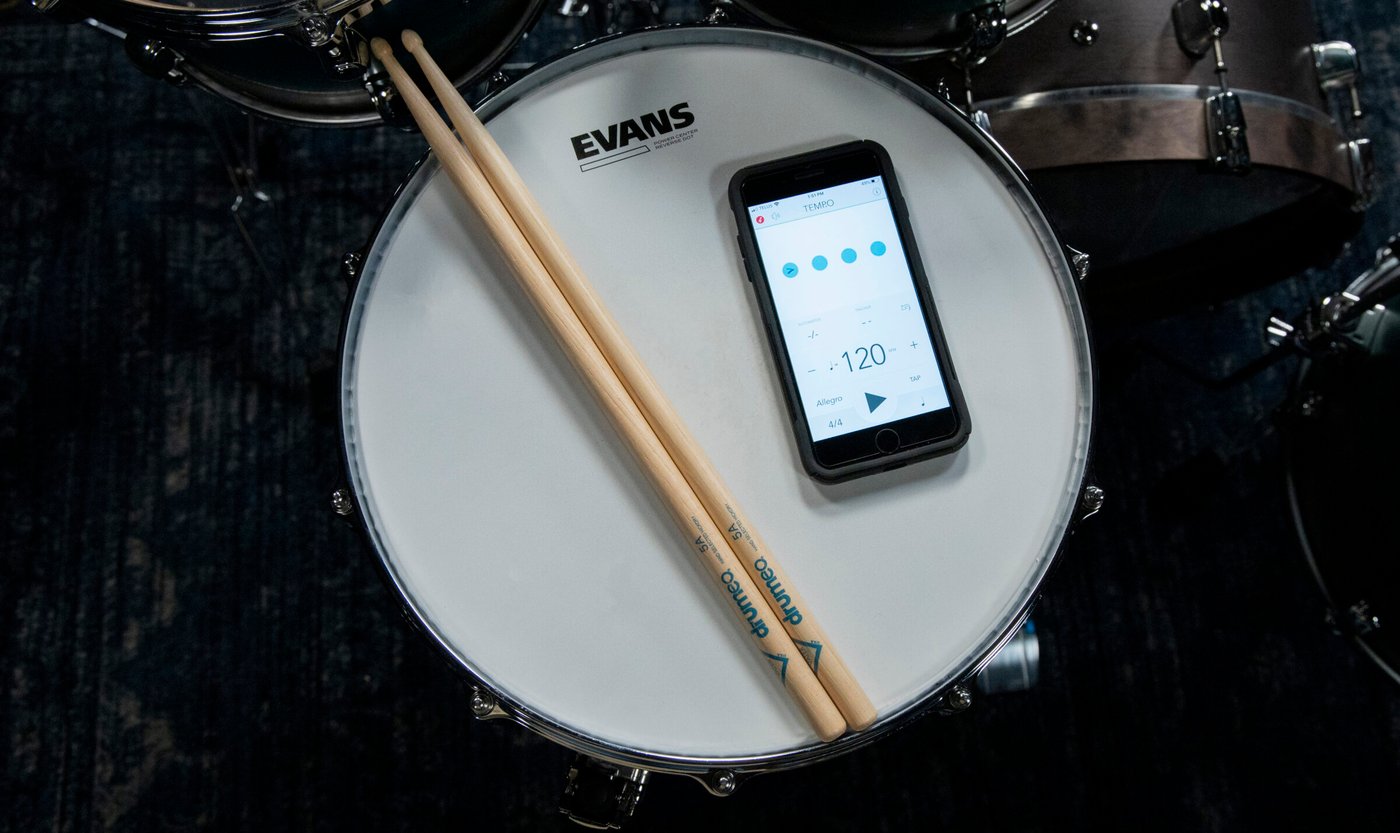
How do you learn songs on drums? And when do you really know a song?
When you can picture the part you’re about to play before it happens, you know the song well.
When you can hear every section in your head while another song is playing, you know the song really well.
When you can play it 100% of the time without messing up, well…
Let’s get you there!
Some people learn by listening and others learn by reading. This guide includes tips to help beginner drummers get started, and to help experienced or working drummers learn songs faster.
The first thing you need to do is get used to ‘active listening’. This means that when you sit down to learn a song, you:
Don’t give up too quickly. Ear training takes…well, training. If you’ve only listened to the song a few times and can’t hear what the drummer is doing, listen a few more times, slow it down using a music program (scroll down to the technology section of this article), or try a simpler song to practice learning by ear.
Before you even think about what the drums are doing:
If you write down the order of sections, it’ll be easier to learn the song rather than relying on your memory. Congrats – you’ve basically written a chart! (Skip ahead to the charts section if you don’t know what that means)
If you aren’t in a rush to play the song, start learning each section bit by bit. Don’t try to tackle the entire song at once. First, learn the intro part. Then, learn the first verse. Then test yourself by practicing both the intro and the first verse together. This is a vertical approach to learning.
However, if you need to learn the song quickly – and it’s more important to nail the structure and get through the track than get every single detail down – try to learn the overall gist of the song, simplify it, and play through it before getting into the nitty-gritty. This is more of a horizontal approach to learning.
Here’s an example of how to simplify drum parts in a song, where Dave shows you how to play “Smells Like Teen Spirit” at any level:
In this video, Jimmy Rainsford (Picture This) talks through his listening process as he learns a song by ear:
In the following video, Larnell Lewis learns a song he’s never heard before. It has no drum parts, but he’s able to figure out how many verses and choruses there are, and he’s paying close attention to the number of times each section repeats:
Rashid Williams does the same in this video:
Gregg Bissonette finds that vocalizing the patterns helps him retain the information – and it can be more fun this way, too!
First, identify the length of the fill. Is it a half-bar fill? A one-bar fill? Or does the fill take two bars to play through?
Then listen to how many notes make up the fill. Similar to what you might do when learning grooves, sing the rhythms to yourself.
If there are snare hits in the fill, figure out where those fall, and then move on to where the bass drum hits go. Add in the toms after. If you’re struggling to distinguish between tom and bass drum sounds, you can either keep listening to the song, look for videos of the drummer playing that part, or give yourself the freedom to decide what goes where.
Jimmy Rainsford demonstrates tips for learning drum fills here:
For more complex or quick drum fills where you’re struggling to hear exactly what the drummer is playing, you can use a program to slow it down. Skip forward to the ‘technology’ section for options!
Did you ever take a test in school where they let you bring your own ‘cheat sheet’? Think of charts as cheat sheets for drummers. Rather than transcribing an entire song note for note, charts are much quicker to write and read. They consist of abbreviated notes that outline the song structure, grooves or accents that need to be played, and other shorthand or symbols chosen by the drummer to help them remember key elements.
This lesson shows you how drum charts help you learn songs faster:
Here’s an example of a handwritten chart for a Radiohead song from this article (click here for the digitized version):
As a session drummer, Randy Cooke uses charts to learn songs quickly:
For each section of the song, it’s helpful to write down:
Here’s an example of Randy’s chart (it may be tough to read a chart that isn’t yours, but this works for him!):
Here’s an example of an even simpler chart written by Gil Sharone, who was tasked with playing a song after one listen:
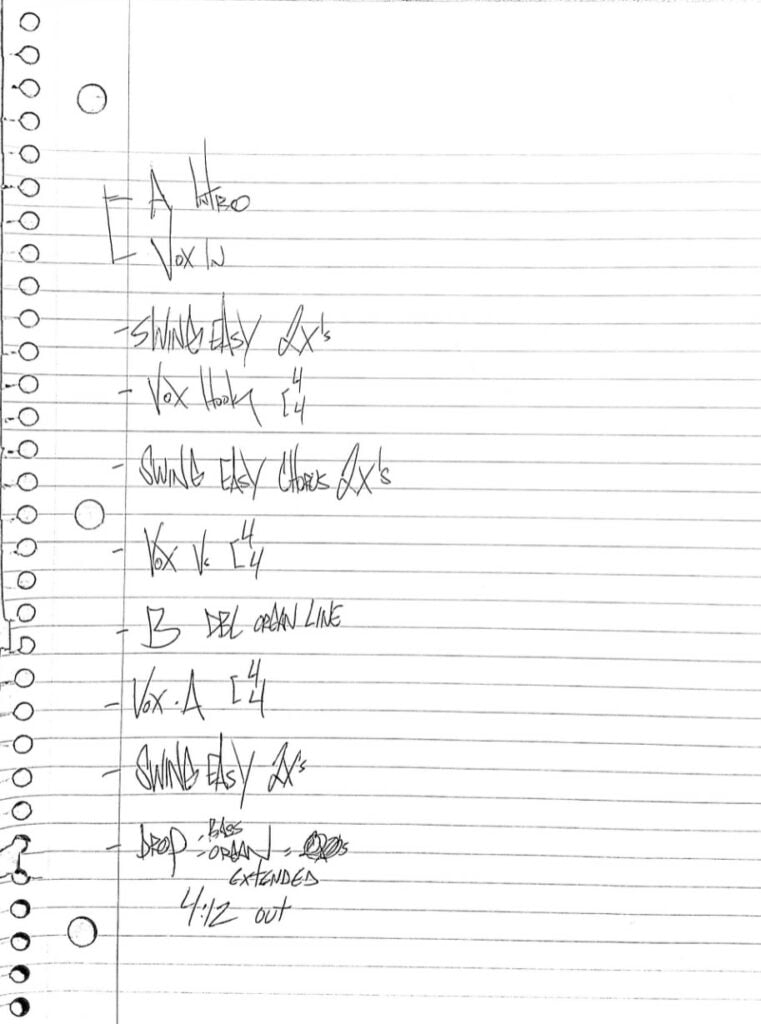
Gregg Bissonette is so fluent in chart-building that he can do pretty much anything on the fly:
See how everyone has their own methods of writing charts?
Reading music in general is a helpful skill. Glen Sobel (drummer for Alice Cooper) got his first big gig because he could quickly read and write music. Can you identify roadmap signs (like a dal segno or coda) or quickly eyeball the length of a phrase? (Shameless plug, but Drumeo has a great course for members called Chart Reading & Interpretation with Stephane Chamberland).
So if you have time to get familiar with charts, it’ll become your best friend – either to help you learn and memorize songs quickly for fun, or to set yourself apart on a professional level.
If you tried teaching yourself songs before the modern digital era, you’d have to stop and rewind the track (relying on your ears) or learn by reading music. While these are still two popular methods for learning songs, technology has made it much easier to work through individual parts.
A DAW is a program designed for music recording, editing, and more. Unless you’re going to be recording your drums often and want the same high end software pro engineers and producers use (like Pro Tools or Cubase), you can get Audacity (not super user friendly, but it’s free), or Reaper (very affordable and great bang for your buck).
All DAWs work in a similar way: if you’ve ever used Photoshop or a similar program, audio software lets you ‘layer’ tracks, effects, and individual drums and cymbals on their own channels so you can move things around, speed things up, slow things down, cut and paste, and much more.
If you’re struggling with the tempo of a song – or the drummer played a fill so fast you can’t figure out what they did – you can slow it down!
Each DAW has its own workspace. While the design differs slightly from one to the next, they all let you change the tempo of a song or section. You should be able to find this function for your DAW with a quick search on Google or YouTube.
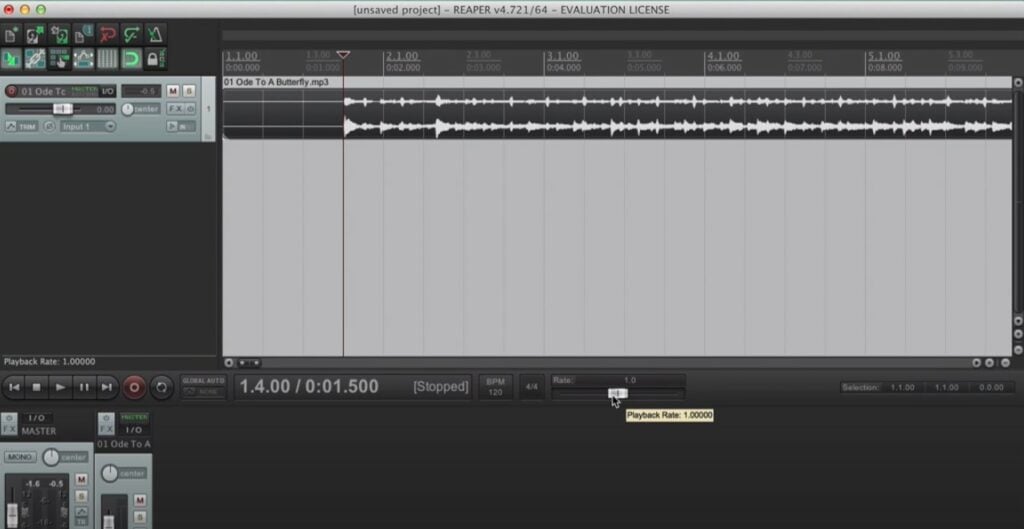
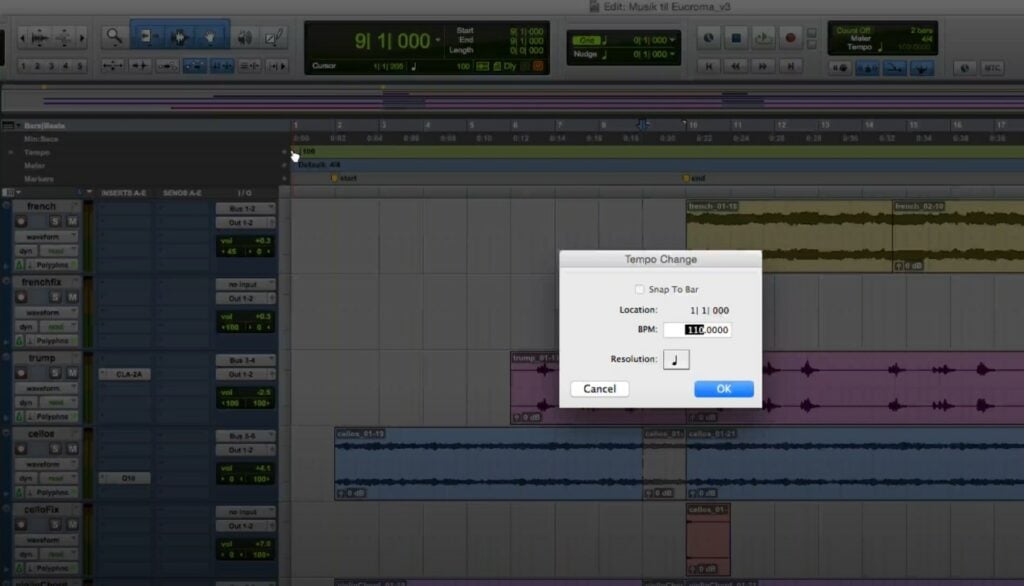
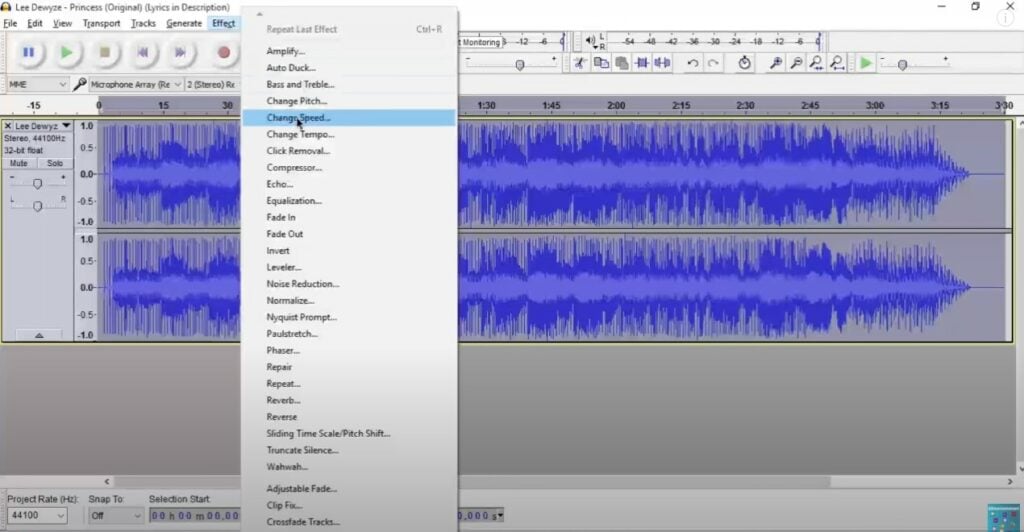
Whether you’re slowing down the entire song or just a tough section, you can also select a part and set it on repeat so you can listen to or practice it over and over again. A quick Google search will tell you how to do it for your chosen software.
Many drummers find that writing out the song (or tricky part) helps them to better internalize patterns. If your brain has already broken down the parts, it’ll be easier to know what you need to do when you sit down on the kit.
If you don’t know how to read or write music, you might still be able to come up with shorthand doodles that work for you. In drum tablature, for example (a simplified way to write drum music), we represent a drum hit with an ‘o’ and a cymbal hit with an ‘x’. And lower-sounding notes (like a bass drum) are typically written below higher-frequency notes (like a snare drum, or even higher, a crash cymbal). If you jot down ‘o’s for the bass and snare drum and some ‘x’s for the main cymbal, that should be enough to get started.
If you want to take it one step further with technology, you can use transcribing software like Guitar Pro or Finale to write out the parts. While many people use these programs for composing original pieces, they’re just as useful for learning songs.
Alex Rudinger has 4 pro tips to learn hard songs faster – and these are immediately applicable whether you’re learning a simple track or something complex:
Why do students take notes in school? Because it helps retain information – especially when you do it by hand. So while learning a song, whether you’re making a chart, a cheat sheet, or mapping out every single note, writing it down can help you internalize the parts more quickly.
Create a roadmap of the song (refer back to earlier sections on how you can do this). You can count each section in bars, chord progressions, or something totally different – whatever comes more naturally to you.
The previous chapter of this article says it all: technology can help us slow down songs, loop parts, visualize patterns, and more. Taking time to break down parts will help you learn songs faster and more accurately (since it takes much longer to muddle your way through it again and again until you eventually figure it out). Work smarter, not harder, as they say.
In case you skipped the ‘using technology to learn songs’ section, go back and watch the video with Alex Rudinger’s practical tips for learning songs faster!
Listening is critical to learning more quickly and accurately. How many times does a section repeat? Where are the key shots and accents? Where do fills start and end?
In this helpful lesson, Casey Cooper (Coop3rdrumm3r) emphasizes continuing to play through the song if you mess up the structure, rather than stop and start again. Since you can’t do that live, it’s a good opportunity to practice your recovery skills; that is, being able to stay on track after making mistakes and transition into the next part seamlessly.
Some pro drummers have next level listening skills. Larnell Lewis learned the entire We Like It Here album by Snarky Puppy on the plane ride to the studio session. Gil Sharone learned an entire +44 set on his flight to fill in for Travis Barker.
While these drummers are at the top of their game, it doesn’t mean you can’t also get there with enough practice and active listening. But you’ll have to be in it for the long haul!
Playing along to music (whether it’s with live musicians or to drumless tracks) is so important to learning the drums and appreciating other musicians and the instruments they play. Plus it makes drumming way more fun, and if your goal is to play in a band or ensemble, you’ll be better prepared to be part of a team.
If you like free stuff (who doesn’t?) and learning new songs, click here to get sheet music and handy playback tools for 40 of the biggest songs in drumming.
Samantha Landa currently drums with Conquer Divide and has been featured by outlets such as Sick Drummer Magazine and DRUM! Magazine. Sam proudly endorses Mapex Drums, Sabian Cymbals, Evans Drumheads and Los Cabos Drumsticks.


By signing up you’ll also receive our ongoing free lessons and special offers. Don’t worry, we value your privacy and you can unsubscribe at any time.
We use cookies for traffic data and advertising. Cookie Policy »